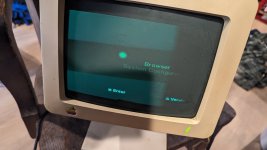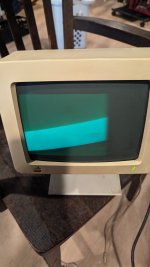That is a good question.
There are many digital models now. So you will get a lot of recommendations.
If you are starting out though, using a scope for the first time, you are more likely to get yourself into trouble using a digital scope. Sample rate issues affect the data, settings in drop down on screen menus that you are not familiar with etc.
I always recommend starting out with an analog scope with a CRT in it, where all(most) of the controls are intuitive, and you never see things on the display that can mislead you which can happen with a digital scope. Move to a digital scope after the the analog one is mastered.
The benefits of digital scopes though are data storage & transfer, math functions, cursors (though some analog scopes have these). But of course, when you just want to observe an electrical waveform changing over time (unless it is very slow), for the purpose of diagnosis and repair, you don't need all those bells and whistles. Ideally the scope would have the equivalent of a 20MHz bandwidth or better for general repairs, computers, VDU's etc. Better 50 or 100MHz though. (My favorite scope is the Tek 2456B, 400MHz, but you wouldn't want that as a starter scope).
B&K made some good analog scopes, like this 30MHz unit, and interestingly they turn up like this unused, this would be a very good starter scope to learn with and diagnose faults in VDU's, just buy a couple of x10 probes to go with it:
Our team will reply ASAP.
www.ebay.com
(seems an amazing buy because essentially the same scope is available new at Newark for just on $1000.)
Probably worth the price as new. One problem with used analog scopes, many are hammered, abused, and look like they have been thrown in and out of the backs of service trucks. So while you could get a used one for $100 or less, its probably is not worth it. Unless it is in exceptional cosmetic condition, loved by its previous one owner, and known to be working.
This Tenma scope looks good too, its cheaper:
Find many great new & used options and get the best deals for Tenma 72-720 Oscilloscope at the best online prices at eBay! Free shipping for many products!
www.ebay.com
100MHz probes work fine, they have a compensation capacitor on their plug and you match them up tho the scope on a square wave test:
Bandwidth: Uniersal oscilloscope probe 10:1 bandwidth 100MHz. Bandwidthï¼100MHz. Good quality: An electric component that connects circuit-under-test and oscilloscope input. Attenuation ratioï¼X1 X10 ±ï¼ï¼.
www.ebay.com
Also if you connect the x10 probe to a part of a circuit with over 500 to 600V on it, its bad for the probe and scope input amplifiers, so to avoid accidents a x100 probe is helpful working on VDU's or tube gear, for example, in a color VDU, you could have 1200V peak on the collector of the H output transistor, and want to look at that with your scope:
This sort of thing which is good for 2kV:
Model: P4100. Bandwidth: 100MHZ. Great choice for oscilloscope probe. Input Capacitance: 100X: 6pF. Input Resistance: 100X: 100MΩ±2%. Attenuation Ratio: 100X. Compact size, several functions combined in one, this probe is convenient to use.
www.ebay.com






